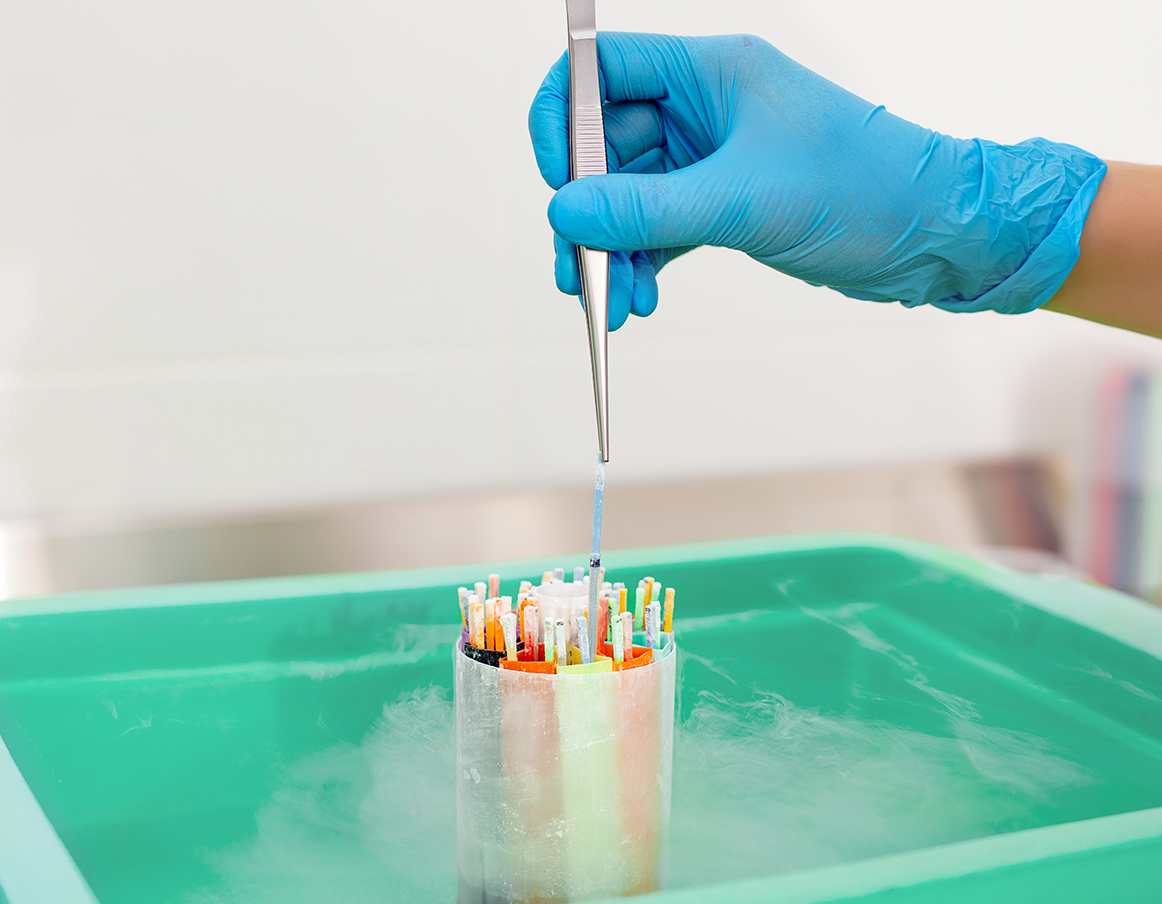Services
Blog

The terms egg freezing and embryo freezing are not to be confused with each other.
Egg refers to the egg cells collected from the mother, and embryo refers to an egg that has been fertilised by the father’s sperm. The freezing processes are completely different from each other as are the reasons for freezing.
Embryo freezing techniques have been used for more than 30 years. A chemical called cryoprotectant is used to prevent cell damage whilst the embryos are frozen. They are then stored in liquid nitrogen tanks at -196℃, in individual ‘straws’. The liquid nitrogen prevents any biological and physiological changes from occurring.
Why Is Embryo Freezing Done?
After IVF treatments couples may want to keep their unused embryos. Embryo freezing guarantees the embryos can be used in future treatments. When a couple has needed egg, sperm or embryo donation, freezing guarantees that any sibling will have a 100% DNA match to the first child.
Embryo freezing also means that mothers over the age of 35 can have further treatment without worrying about the decline in their egg reserve. It is also useful for women who are needle phobic or do not want to undergo a further egg collection.
In order to have a second baby, couples who have been through in vitro fertilisation treatment and already have high quality embryos, will not need to go through the stimulation phase of treatment again.
Who will benefit from embryo freezing?
- Couples who want a sibling
- Couples who use egg, sperm or embryo donation and want to have full siblings in the future
- Couples who do not want to pay the same treatment costs in the unlikely event of a negative result, or a miscarriage during pregnancy,
- Couples who are likely to need Chemotherapy in the future, as it damages egg and sperm cells.
- Couples who do not want to go through another cycle of fresh IVF or those afraid of needles
Transfer of Frozen Embryos
When couples want to have a baby using frozen embryos, the following steps take place:
- On the 2nd day of her menstrual period, the mother starts taking tablets to prepare her endometrium. Folic acid should also be taken.
- After 7 days of medication, an ultrasound examination will be required to look at the lining of the uterus. According to the endometrium thickness, medication doses are reviewed.
- After 12 days of medication, another ultrasound measurement is required and a 2nd medication is introduced.
- On average, medication is used for 16-18 days. The mother is then required to travel to Cyprus on approximately day 16 of medication and embryo transfer is performed.
- The required stay in Cyprus is just 1 day but patients may prefer to stay 3 days.
Research has proven that frozen embryos are likely to develop into a pregnancy even if they have been frozen for 10 to 15 years!



